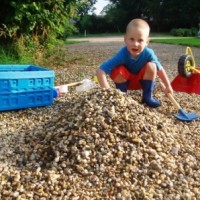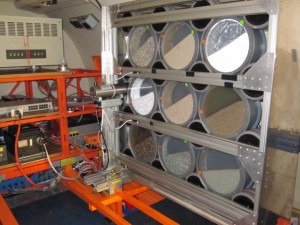A basic property of noncohesive granular materials is their angle of repose: the maximum angle at which the material is at rest. Above this angle, the material starts to flow; below this angle, the material is stable. Noncohesive granular materials are found in many contexts, from kitchen to industry and nature. It is also found on other planets and moons in the solar system, for instance on steep talus slopes, on wind dunes and in deltas. Natural sediments as well as diamonds, chocolate sprinkles (hagelslag) and oranges have angles of repose roughly between 25° and 40° on Earth. Until now it has been assumed that the angle of repose of a given material is independent of gravity, i.e. has the same angle on other planets as on Earth. The question is whether this is correct.
We flew experiments with rotating drums in September 2009 in the PH-LAB Cessna Citation II of TU Delft and NLR. This Cessna Citation is equiped with a Partial-g Flight Director, which aids the human-machine interaction in doing accurate parabolic flight manoeuvres to obtain a constant reduced gravitational acceleration for about 20 seconds per parabola. In 33 parabolas, we recorded experiments on HD video to measure the angle of repose systematically for well-rounded (glass beads) and angular particles (sand), for small and large particles (fine sand to fine gravel, where sand has a diametre D<2 mm), for particles in air and in water and for three different gravitational accelerations: g (Earth), 0.34g (Mars) and 0.1g (practical smallest limit). UvA did experiments on stratification in Hele-Shaw cells.
by Dr Maarten Kleinhans



